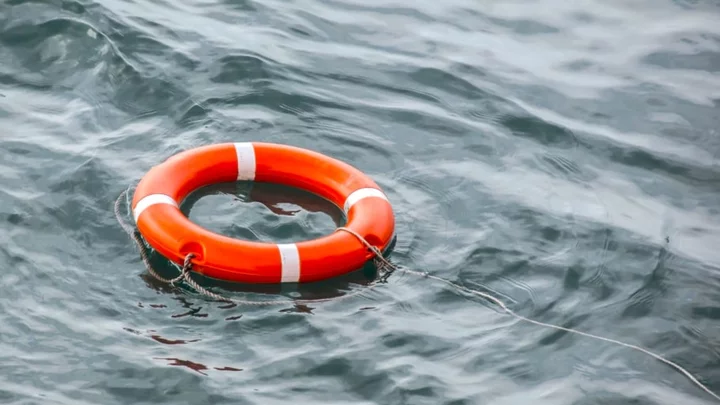In an ordeal that will surely go down as one of history’s greatest survival stories, four children lived through a plane crash and 40-day stranding in Colombia’s Amazon rainforest in June 2023. The kids, ages 1, 4, 9, and 13, were members of an Indigenous community and relied on their cultural knowledge to find edible plants before they were rescued. Colombia’s president called their survival “a joy for the whole country.”
Most of us never find ourselves in a battle for our lives—we feel pretty safe on our couches reading about survivors of expeditions gone wrong, natural disasters, and previously unthinkable shipwrecks. That makes these incredible survival stories all the more memorable.
1. Ernest Shackleton’s 800-Mile Journey in an Open Boat // 1916
Antarctic explorer Sir Ernest Shackleton had started out in 1914 with a mission to be the first to cross Antarctica on foot. By November 1915, his ship, the Endurance, had been crushed by sea ice and his crew of 27 were stranded on an ice floe. After they made it to tiny, uninhabited Elephant Island in spring 1916, Shackleton made the decision to go for help. He and a five-person crew sailed their largest lifeboat, the James Caird, 800 miles over the planet’s roughest sea to the island of South Georgia.
The crew faced icebergs, enormous swells, and gale-force winds. Waves of icy seawater pummeled their bodies. They had no waterproof clothing. The boat pitched and rolled like a cork. Aching and freezing, the men bailed with buckets as they took on water. They barely slept, ate, or drank for two punishing weeks.
Finally, the James Caird approached South Georgia’s coastline, but a hurricane made landing nearly impossible. After several tries, Shackleton landed them safely in a small inlet. Then, he and two other men scaled the glacier-covered mountain range that ran down the center of the island to reach a Norwegian whaling station. Several weeks and unsuccessful attempts later, Shackleton charted a Chilean ship to rescue the men left behind on Elephant Island—all of whom survived the ordeal.
2. Sir John Franklin’s Disastrous Coppermine Expedition // 1819–1822
As part of Great Britain’s quest to find the Northwest Passage, its Admiralty organized a bare-bones expedition to seek an overland route through northern Canada. Sir John Franklin was put in charge of charting the Coppermine River from the Great Slave Lake to the Arctic Ocean. The expedition also included naval surgeon John Richardson, midshipmen George Back and Robert Hood, seaman John Hepburn, and about two dozen Canadian voyageurs, plus First Nations guides and hunters.
Their grueling journey seemed cursed from the start: Lt. Back literally missed the boat when the group departed England. (He caught up at the next port.) Once in Canada, their progress by canoe to the Arctic shore and back was plagued by awful weather, lack of food, and exhaustion. They ate lichen they scraped off rocks. Franklin boiled his own shoe leather for nourishment, earning him the nickname “The Man Who Ate His Boots.”
The weaker members of the party lagged behind while Franklin went ahead to a deserted fort. Richardson and Hood realized one of the voyageurs had been secretly feasting on the bodies of colleagues who had already perished. The voyageur murdered Hood; Richardson then shot the voyageur to save himself and Hepburn. Meanwhile, Franklin and Back found the fort perfectly devoid of food; Back went in search of their First Nations hunters while Franklin and the rest of the party awaited almost certain death.
Miraculously, Back returned from a 1500-mile journey on foot with the hunters, who nursed the survivors back to health. Only eight of the original 19 members of the expedition survived, including Franklin, who would go on to achieve even greater notoriety.
3. Juliane Koepcke’s Fall from the Sky // 1971
After graduating from high school in Lima, Peru, 17-year-old Juliane Koepcke boarded a flight with her mother to the remote Panguana biological station, founded by her parents. Lightning struck the plane in mid-air, breaking it apart. Koepcke survived a fall of almost 10,000 feet, still strapped to her seat. After the crash, she spent 11 days alone in the Peruvian rainforest.
Koepcke made her way through the sodden jungle with a broken collarbone and a wounded arm. She was ravaged by insect bites and developed a maggot infestation. After nine days of searching for help, she finally came upon logging camp, where workers there gave her first aid. They transported her to a village and airlifted her to a hospital. Once healed, Koepcke—the only survivor of the accident—helped search parties locate the crash site and recover victims’ bodies, including her mother’s remains.
Werner Herzog tells her story in his 1998 documentary Wings of Hope. (Incredibly, Herzog had escaped the same accident; he intended to take the flight but changed his plans at the last minute.) In 2011, Koepcke published her memoir of her experience, When I Fell From the Sky.
4. Ada Blackjack’s Solo Ordeal in Siberia // 1921-1923
In the early 1920s, 25-year-old Ada Blackjack, an Iñupiat widow with a young son, was hired as a cook and seamstress for an ill-conceived expedition to claim Wrangel Island, a remote and uninhabited landmass north of Siberia, for Britain. Organized by Canadian explorer Vilhjalmur Stefansson, the expedition included Blackjack and four male explorers. She did not want to go, but she was enticed by the $50 paycheck.
Stefansson dropped the party off on the island on September 15, 1921, and things went downhill from there. The group subsisted on small game for a few months, but their supplies dwindled and edible wildlife vanished. They grew weak and desperate. Three of the men disappeared on a hunting trip. The other one died of scurvy, leaving Blackjack to fend for herself for five brutal months. She used a rifle to shoot seals and chewed their skins to make leather for boots. After nearly two years in the wasteland, a rescue schooner finally arrived from Alaska to take her home—the sole survivor of the disastrous mission.
5. Against All Odds in the Andes // 1972
On October 13, 1972, a small plane carrying members of a Uruguayan rugby team crashed in the Andes after the pilot misjudged their location. Twenty-nine of the 45 passengers and crew survived—but, alone in the brutal cold at 11,500 feet, they had no means to call for rescue. The plane’s white fuselage blended into the snow, making it invisible to possible rescuers flying overhead. For the next two months, the survivors remained at the crash site and forced themselves to eat the frozen flesh of the dead passengers.
Two rugby players, Nando Parrado and Roberto Canessa, eventually went for help. Despite being weakened by cold and starvation, they managed to hike to a lower altitude and spotted a farmer across a stream. They told the villagers where they had come from by securing notes to a rock and tossing it across the water. By the time their harrowing experience ended 72 days after the crash, 16 survivors remained alive. Their ordeal became known as the “Miracle of the Andes,” and produced a bestselling book and movie, Alive.
6. The Revenant Legend // 1823
Each of the twists and turns in Hugh Glass’s survival story could have proven fatal. On a fur-trading expedition in South Dakota in 1823, he was mauled by a grizzly bear to within an inch of his life. After finally regaining consciousness, a horribly injured Glass found himself abandoned by his comrades with no rifle or equipment. He set his own broken leg, clothed himself in a bear hide, and began crawling to Fort Kiowa on the Missouri River, about 260 miles away. Glass let maggots eat the dead flesh in his wounds to stave off gangrene.
Using a promontory called Thunder Butte as a navigational marker, Glass made his way south toward the Cheyenne River, where he constructed a crude raft and drifted downstream to Fort Kiowa. The journey took six weeks, during which he subsisted on wild cherries and edible plants.
His trek out of the country made Glass a folk hero. The Oscar-winning 2015 film The Revenant, starring Leonardo DiCaprio, is a fictionalized account of his experience.
7. Douglas Mawson’s Antarctic Trek // 1912-1913
A series of disasters befell Australian explorer Douglas Mawson’s Far Eastern Sledge Party, which had set off from Cape Denison in Antarctica in November 1912. He and two colleagues, Swiss adventurer Xavier Mertz and British army lieutenant Belgrave Ninnis, aimed to explore 500 miles of terrain to the east of the Australasian Antarctic Expedition’s main camp at the cape.
Ferocious winds plagued the trio and their dog teams, while a web of crevasses and wind-blown ridges of ice delayed their progress. After 311 miles, the real suffering began. Ninnis and six dogs fell to their deaths down a deep crevasse. Most of the human food, dog food, and the tent went down with them. The accident left Mawson and Mertz with extremely limited provisions and forced them to turn around immediately for the month-long journey back to base. They killed the remaining dogs for sustenance. Keeping the “best bits” for themselves, they fed the other meat to the surviving dogs, but both men came down with Vitamin A poisoning from eating the canines’ livers. Mawson’s skin came off in sheets. Mertz died on January 8.
In February 1913, Mawson, emaciated and frostbitten, stumbled back to base after surviving a 30-day solo trek over glaciers. Despite his ordeal, the rest of the Australasian Antarctic Expedition was a scientific and technical success, and Mawson became a national hero. In 1984, his face was immortalized on the Australian 100-dollar banknote.
8. Three Days Underwater // 2013
In May 2013, off the coast of Nigeria, ship’s cook Harrison Okene was in the bathroom when winds blew the sea into massive rollers, capsizing the small tugboat on which he worked. As it sank in almost 100 feet of water, upside down, 11 of the crew members drowned. But Okene managed to swim into an air pocket measuring about four square feet, clothed only in his underwear. He was alive, but utterly trapped at a lethal depth.
After more than two days in freezing water and with a decreasing supply of oxygen, Okene heard a pounding noise coming from the deck. A group of South African search-and-rescue divers had arrived—and were shocked to hear Okene’s faint hammering in response.
Finally, they found him and managed to extract Okene from the sunken boat. Once he was free, Okene was put into a decompression chamber and safely returned to the surface. Experts said his 60-hour ordeal could have been fatal even for experienced divers.
9. The Woman Who Survived Three Shipwrecks // 1911-1916
Ship’s nurse and stewardess Violet Jessop lived through a trifecta of major shipwrecks on the ocean liners Olympic, Titanic, and Britannic.
In 1911, while Jessop was working aboard the White Star liner RMS Olympic, the huge passenger ship collided with the HMS Hawke near the Isle of Wight. Although both ships sustained considerable damage, the Olympic made it back to port, and Jessop disembarked without injury. Two years later, she accepted a job on board White Star’s theoretically unsinkable RMS Titanic. She escaped the ship’s sinking on April 15, 1912, in Lifeboat 16.
Having survived that disaster, she served as a nurse on board the HMHS Britannic, operating in the Aegean Sea during World War I. In 1916, the ship ran into a mine planted by a German U-boat and began sinking; Jessop jumped overboard but was sucked under the ship’s keel as it went down. She sustained a skull fracture, but lived to tell about her multiple brushes with death at sea.
10. Rescued From a Flooded Cave // 2018
In June 2018, a boys’ soccer team and their coach spent two weeks trapped in a Thai cave by torrential rains that had flooded their only means of escape.
The group had entered the extensive Tham Luang Nang Non cave network and walked more than two miles into the system, stopping in a chamber roughly 3000 feet underground. They were dressed in t-shirts and shorts and had no food or water with them when they were pinned in the cave by the rising floodwaters.
It took nine days for divers to locate the 12 players and their coach, and another eight days to save them. The rescue effort required thousands of people, including 100 divers, hundreds of rescue workers, and 10 police helicopters. Over a billion liters (264 million gallons) of water had to be pumped from the cave system. Amazingly, all of the boys and their coach were pulled out alive and recovered from their grueling 18-day ordeal.
A version of this story was published in 2022; it has been updated for 2023.
This article was originally published on www.mentalfloss.com as 10 of History’s Most Amazing Survival Stories.









